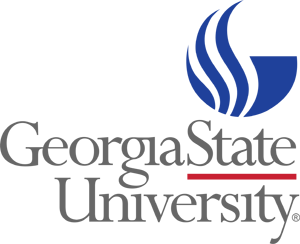Newswise — ATLANTA--There are common vulnerabilities among three lethal coronaviruses, SARS-CoV-2, SARS-CoV-1 and MERS-CoV, such as frequently hijacked cellular pathways, that could lead to promising targets for broad coronavirus inhibition, according to a study by an international research team that includes scientists from the Institute for Biomedical Sciences at Georgia State University.
In the last 20 years, the world has faced three deadly coronaviruses: SARS-CoV-2, SARS-CoV-1 and MERS-CoV. SARS-CoV-2, the virus that causes COVID-19, has triggered a global pandemic that has already resulted in more than 37 million confirmed cases and more than one million deaths.
The study's findings, published in the journal Science, identify commonalities among coronaviruses and highlight several shared cellular processes and protein targets that should be considered as targets for therapeutic interventions for current and future pandemics.
The results were achieved by a collaboration among nearly 200 researchers from more than 14 leading institutions in six countries. Dr. Christopher Basler, professor and director of the Center for Microbial Pathogenesis in the Institute for Biomedical Sciences, led efforts at Georgia State.
Prior studies have identified more than 300 host cell proteins that can interact with SARS-CoV-2 proteins. In this study, the Basler laboratory screened each of these for their capacity to change how well the virus grows.
"The efforts identified at least 20 host genes whose protein products significantly alter how much virus is produced by infected cells," said Basler, a Georgia Research Alliance Eminent Scholar in Microbial Pathogenesis. "Those proteins represent potential targets for therapeutic intervention. For example, if a cellular protein is required for efficient virus growth, a drug that inhibits the cellular protein should slow the infection."
The multidisciplinary, global study also analyzed the medical records of about 740,000 patients with SARS-CoV-2 to identify approved therapeutics with potential for rapid deployment to treat COVID-19.
###
Co-authors of the study are academic and private sector scientists at the following institutions: The University of California, San Francisco; The University of California, San Francisco's Quantitative Biosciences Institute's Coronavirus Research Group; Gladstone Institute; EMBL's European Bioinformatics Institute in Cambridge, England; Georgia State; Icahn School of Medicine at Mount Sinai in New York; Institut Pasteur in Paris; University of Freiburg in Germany; University of Sheffield in the United Kingdom; and other institutions as well as the companies Aetion and Synthego.
The work was funded by grants from the National Institute of Mental Health and the National Institute of Allergy and Infectious Diseases, both part of the National Institutes of Health; the Defense Advanced Research Projects Agency; the Center for Research for Influenza Pathogenesis; the Centers of Excellence for Influenza Research and Surveillance of the National Institute of Allergy and Infectious Diseases; the Centers of Excellence for Integrative Biology of Emerging Infectious Diseases of the Agence Nationale de la Recherche (France); F. Hoffmann-LaRoche AG; Vir Biotechnology, Centre for Integrative Biological Signalling Studies, European Research Council; the Ron Conway Family; Fast Grants for COVID-19 from the Emergent Ventures program at the Mercatus Center of George Mason University; and an Augusta University-Georgia State University Seed Grant program.
MEDIA CONTACT
Register for reporter access to contact detailsCITATIONS
Science
